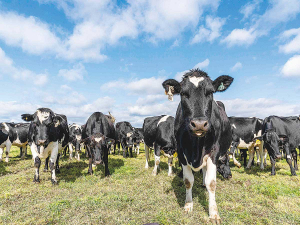Ensuring your cows have the best mating this season
Hit the ground running this mating with these foundations for success.
 With mating season around the corner, there's no time for guesswork or getting herd nutrition wrong, according to GrainCorp Feeds' technical support manager Ken Winter.
With mating season around the corner, there's no time for guesswork or getting herd nutrition wrong, according to GrainCorp Feeds' technical support manager Ken Winter.
With mating season around the corner, there's no time for guesswork or getting herd nutrition wrong, according to GrainCorp Feeds' technical support manager Ken Winter.
With changing pasture quality, he says making sure cows are getting adequate metabolisable energy (ME) is perhaps this season's most pressing issue.
"At this time of the year, the energy demands on a cow are at an all-time high. The physical exertions of pregnancy, calving and now milk production have taken a toll on her energy reserves.
"It is critical to bring her energy levels up, not only for milk production, but for reproduction. If a cow's energy intake is lower than her output, her body will find the missing calories from within her own system."
Body fat and protein will be mobilisd to make milk, but the cost of doing so will be high. Body condition will be lost and so will her ability to conceive. I've seen it happen many times.
"The most common mistake I see at this time of year is animals being fed too little. Some farmers underestimate the genetic potential of their herd, which leads them to underestimate feed requirements. Unfortunately, many cows will head into mating undernourished, which can adversely affect conception rates."
There are solutions, but farmers need to know how much to feed their cows to meet their cows to meet their genetic and fertility requirements.
Reaching a target Body Condition Score (BCS) of 5 to 5.5 before calving is ideal. Ensuring a cow's rumen is fit and healthy prior to calving and stimulating a good appetite post-calving are two key factors. Ken has seen good results when a series of practical measures are taken.
"Underfed animals need an energy break. One of the best things a farmer can do is to milk once-a-day over the colostrum period, for 4-5 days after calving and even longer if necessary. Not only will this take less out of the cow, it helps protect the integrity of the liver which in turn means better feed conversion efficiency. More energy from every bite can lead to improved immune function, performance and appetite.
"The other crucial part is bringing in additional feed to fill the energy gaps. I always start on-farm to see what resources are already available. Farmers often come unstuck because they haven't built up enough feed cover and there isn't any extra to turn to. With a bit of planning, we can fix that for next season."
The National Wild Goat Hunting Competition has removed 33,418 wild goats over the past three years.
New Zealand needs a new healthcare model to address rising rates of obesity in rural communities, with the current system leaving many patients unable to access effective treatment or long-term support, warn GPs.
Southland farmers are being urged to put safety first, following a spike in tip offs about risky handling of wind-damaged trees
Third-generation Ashburton dairy farmers TJ and Mark Stewart are no strangers to adapting and evolving.
When American retail giant Cosco came to audit Open Country Dairy’s new butter plant at the Waharoa site and give the green light to supply their American stores, they allowed themselves a week for the exercise.
Fonterra chair Peter McBride says the divestment of Mainland Group is their last significant asset sale and signals the end of structural changes.